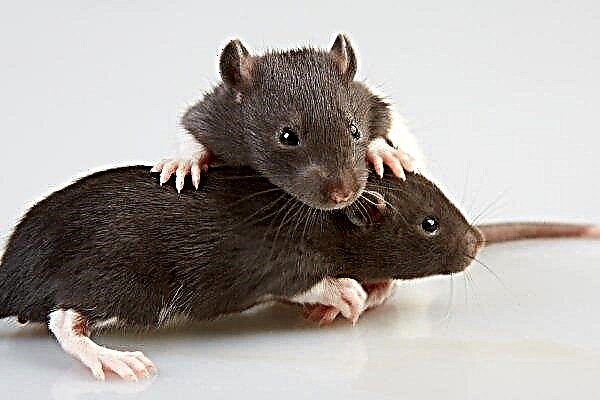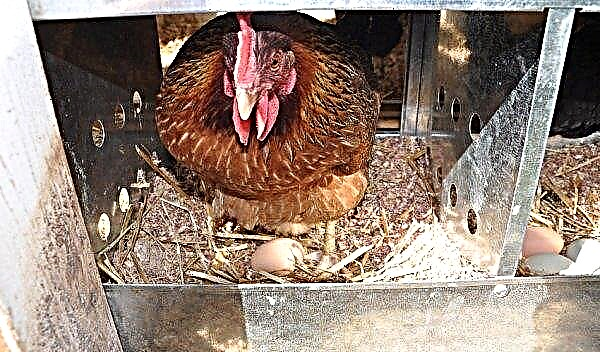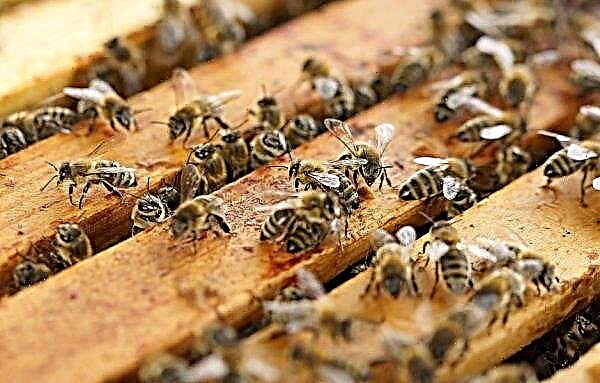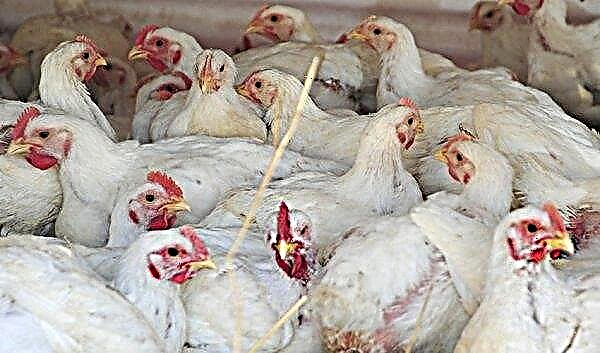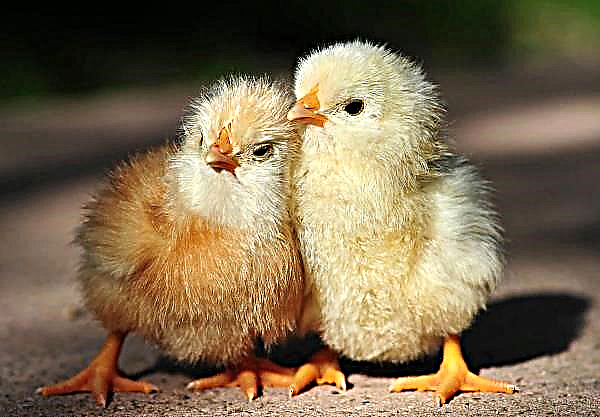Leptospirosis is one of the most common and dangerous diseases found among agricultural animal species. Annually this ailment brings a lot of losses and quite often leads to cattle death. But, despite this, most farmers neglect this problem, as well as all kinds of anti-lethal measures. In this article, we will consider in detail what threatens this disease for the farm, and also tell you how to prevent its spread.
What is this disease
Leptospirosis is an acute infectious disease in livestock and other domestic animals. The disease leads to pathologies of capillaries and general intoxication of the body, as a result of which the robot of the kidneys, liver and muscles of the body are disturbed.
The disease occurs on all continents and in geographical areas, with the exception of Antarctica, and often seriously violates the epidemiological situation in the distribution zone.
Did you know? Leptospirosis was isolated as a separate disease among related infections in 1883 thanks to the Russian bacteriologist Nikolai Vasiliev.
The disease is highly contagious, so even the slightest contact with the source of the disease leads to infection. Leptospirosis in veterinary medicine is considered one of the most dangerous pathologies. In more than 50% of cases, the infection is extremely severe and requires immediate medical attention.
Pathogen and route of infection
The main cause of the disease is cattle damage by various strains of microorganisms from the genus Leptospira. They are gram-negative bacteria with translational, rotational or oscillatory motion.
Reproduction of these microorganisms takes place both inside animals and in the natural environment. In nature, leptospira are found in swampy areas or near water bodies, where they actively reproduce.
The main source of infection is rodents that live near marshes. Infected mice and rats carry a dangerous bacterium throughout their habitat, infecting feces and other physiological secretions with feed and cattle bedding.
After infection of one animal in a herd, an infection with saliva, feces and urine instantly spreads among the entire population. In this case, the disease often acquires an epidemiological character.
Sometimes leptospirosis is a cause of non-compliance with the general rules of grazing. The infection gets to the animals directly from contaminated water or nearby vegetation. In this case, the pathology is often observed in young animals under the age of 1–1.5 years.
This is associated with the low protective ability of the immunity of young calves, therefore, in 70% of cases, infection of young animals ends in death.
Symptoms
It is quite difficult to identify the first symptoms of the disease. Most adult animals do not experience distinct changes in behavior. However, many veterinarians note that the first suspicions of the development of leptospirosis in the herd can be identified during the breeding season, as the infection almost completely interferes with the pregnancy of cows. Among young animals, the signs of an ailment are even harder to detect. Infection leads to a sharp damage to the body and an early death, which, in principle, makes it impossible to diagnose the disease in the early stages.
Among young animals, the signs of an ailment are even harder to detect. Infection leads to a sharp damage to the body and an early death, which, in principle, makes it impossible to diagnose the disease in the early stages.
But the first suspicions about the defeat of the herd by leptospirosis can be raised when animals observe:
- hyperthermia (fever);
- rapid pulse;
- labored breathing;
- decreased appetite;
- lethargy and general depression;
- rejection of grazing;
- swelling of various areas of the body;
- bruises on the body and mucous membranes;
- bloody urine;
- symptoms of anemia;
- weight loss, up to unnatural thinness.
Important! If you identify the symptoms described above, you should immediately contact your veterinarian, since after 7-10 days after infection, leptospirosis leads to death in 90-100% of cases.
Diagnostics
Diagnosis of leptospirosis is carried out on the basis of a comprehensive examination of livestock. First of all, the veterinarian is studying the general clinical picture, thanks to which it is possible to determine not only behavioral, but also physiological changes in livestock. After that, a variety of physiological fluids were collected from animals for laboratory research, including blood sampling.
After that, a variety of physiological fluids were collected from animals for laboratory research, including blood sampling.
The selected samples are checked for the presence of antibodies to leptospira, and they are also bacteriologically seeded on selective media. Additionally, samples are checked for the presence of DNA and RNA structures inherent in leptospira using the PCR method.
If there are signs of meningeal infections, lumbar puncture is performed in sick animals.
Also, the development of leptospirosis is also indicated by a general hematological study.
In this case, in sick individuals observed:
- decrease in the number of red blood cells in the blood;
- increase or decrease in hemoglobin;
- a drop in blood sugar, up to zero;
- leukocytosis;
- increased bilirubin and plasma proteins.
Pathological changes
The most vivid picture of the development of infection in the body of livestock manifests itself in a pathological study.
In this case, the following changes are observed in the infected cattle:
- yellowness of the mucous membranes and skin;
- foci of necrosis in the edematous areas of the body;
- the accumulation of bloody and rotten discharge in the abdomen and thoracic region.
 The most striking manifestations of leptospirosis can be detected in the study of the liver. The organ greatly increases in size, and its edges become slightly rounded. In this case, the natural color of the liver changes to icteric, and necrosis and hemorrhage are observed under the capsule.
The most striking manifestations of leptospirosis can be detected in the study of the liver. The organ greatly increases in size, and its edges become slightly rounded. In this case, the natural color of the liver changes to icteric, and necrosis and hemorrhage are observed under the capsule.When the liver is cut, a change in the structure of its parenchyma to a more viscous one is observed. The kidneys are also subject to characteristic changes. Diagnosis is the smoothing of their edges and shapes, as well as pinpoint foci of hemorrhage. When examining body fat, it is possible to identify characteristic inclusions of exudates.
Did you know? Leptospira got its modern name in 1917 thanks to the Japanese bacteriologist Horir Nogushi. This name was not given to scientists by chance, since all representatives of this genus of microorganisms differ in a characteristic spiral shape.
Treatment
The treatment of this disease is a rather laborious and complex process. The infection spreads instantly throughout the body and leads to irreversible changes.
Therefore, the main therapy often consists of two specific courses, one of which is aimed at eliminating the pathogenic bacteria from organs and tissues, and the other at the treatment of symptomatic manifestations.
Antimicrobial therapy
For antimicrobial therapy of leptospirosis in cattle, a fairly impressive list of all kinds of drugs is used.
Among them, therapy based on the following means is considered the most effective:
- hyperimmune serum - is introduced into the body in the form of subcutaneous injections 1 or 2 times with the calculation of 1 ml / kg of animal weight;
- streptomycin - used as a subcutaneous injection with a calculation of 10-12 thousand units / kg of animal weight, every 12 hours. The general course of treatment with streptomycin is no more than 5 days;
- kanamycin - the drug is administered intramuscularly, with a calculation of 15 units / kg of animal weight. Use it for 5 days with an interval of 8 hours between each use;
- tetracycline - injected into the body of animals orally, with food or water. Apply it twice a day, with a calculation of 10-12 mg / kg of body weight. General tetracycline therapy lasts until complete recovery.

Symptomatic treatment
To alleviate the symptomatic manifestations of leptospirosis, sick animals are shown:
- Ringer-Locke fluid - the drug is administered intravenously at a rate of 3 l / individual per day;
- haemodesis - injected into the body intravenously, dropwise, 1-2 times a day, with a calculation of 500-1000 ml / individual (for calves, the dosage is reduced by 10 times);
- syntomycin - It is given to cattle by the oral route, 3 times a day, with a calculation of 30 mg / kg of body weight. The duration of therapy is no more than 4 days;
- caffeine benzoate - used for intramuscular injection, with a calculation of 5-10 ml / individual. The duration of therapy and the number of injections is prescribed individually by the veterinarian;
- glucose solution (40%) - used as intravenous injections with a calculation of 200-500 ml / individual per day (calves less, adults more).
Important! During treatment of cattle from leptospirosis, it is imperative to adhere to general safety measures when working with infected animals, since the disease is extremely dangerous for humans.
Vaccination
Timely vaccination is one of the most common ways to prevent leptospirosis in livestock. To do this, use the so-called multivalent vaccine VGNKI. Its main goal is to protect animals from zones favorable for the development of leptospirosis from acute forms of infection.
It consists of a mixture of various cultures of pathogens inactivated artificially. When ingested, the mixture leads to the development of stable immunity for a long time. Dosage VGNKI for cattle of different ages
Dosage VGNKI for cattle of different ages
| Animal age | Primary vaccination, ml / individual | Revaccination, ml / individual |
| less than 6 months | 4 | 4 |
| 6-12 months | 4 | 8 |
| 1-2 years | 8 | 8 |
| more than 2 years | 10 | 10 |
The development of stable immunity with the help of a vaccine provides for periodic revaccination of livestock. The frequency of the procedure, first of all, depends on the age of the animals. Calves less than 12 months old are vaccinated every 6 months, adults - with a frequency of 1 time per year.
Other preventive measures
Vaccination is not the only way that helps to avoid the development of dangerous infections among livestock. The observance of general sanitary and hygienic measures in mass breeding of industrial species of animals will also help in this matter.
For this, each farmer must:
- periodically conduct inspection of wards in the household;
- quarantine new animals for at least 30 days;
- adhere to the general rules of hygiene of livestock;
- use only clean and tested feed and bedding;
- protect the farm from the invasion of rodents;
- treat cattle breeding areas with antibacterial drugs at least 1 time per month;
- avoid cattle grazing in wetlands and surrounding areas.
 Leptospirosis is a dangerous infectious disease that occurs in almost all regions of mass breeding of cattle.
Leptospirosis is a dangerous infectious disease that occurs in almost all regions of mass breeding of cattle.The disease is contagious enough, therefore, in order to avoid infection of the entire livestock, it is imperative to adhere to the general hygiene rules for keeping livestock, including the schedule for vaccinating livestock. Otherwise, a dangerous infection can cause the death of animals, which will certainly lead to significant losses for the economy.

